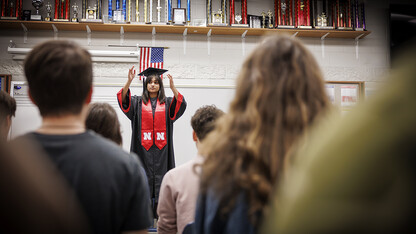· 4 min read
Upgrades to archive lift Livingstone’s mythical veil

It’s a tale of the man vs. the myth.
David Livingstone, the 19th-century British explorer, is an historical and cultural icon in the United Kingdom and Africa. But much of his legend is built upon assumptions and rehashed tales, often erasing the importance of others in his accomplishments.
No longer, though. Livingstone’s unabridged story can now be read, in his own words, with his original manuscript materials at Livingstone Online, a digital museum and library dedicated to the voyager.
Livingstone gained renown during the British colonization of Africa in the 1800s, and his diaries painted a sweeping picture of the continent and its people. He also wrote comprehensively about the atrocities of the East African slave trade. His story has been told in numerous books and movies, but never before have his own words been available to the masses.
Adrian Wisnicki, assistant professor of English at the University of Nebraska–Lincoln, led a group of international scholars to update Livingstone Online with more than 7,500 digital documents – including letters, diaries, maps and sketches. Users can interact with the entire collection, which was formerly available only by visiting about dozens of libraries and archives around the globe.
“For the digital user, we wanted to recreate the experience of being in the archive, and it’s as close as you can come to handling manuscript pages without actually touching the originals,” said Wisnicki, who also is a faculty fellow of the Center for Digital Research in the Humanities.
A 2013 grant from the National Endowment for the Humanities began the push toward the upgraded digital archive. In addition to new scholarship, images and edited transcription, Livingstone Online has been mobile-enabled. Users can engage in detailed archival research with the site from a mobile phone, manipulating images as if on a desktop.
Under Wisnicki’s guidance, the site’s concept also changed. In keeping with its mission as a digital museum, the site seeks to educate audiences about Livingstone’s work in its historical contexts and about the preservation of his legacy over time by different sets of people.
“Livingstone’s legacy has been extracted from history and used in a variety of ways. We want people to understand the many ways his work was woven into its historical moment and how Livingstone’s ideas could emerge from, for instance, his conversations with local African populations,” Wisnicki said. “These conversations are often documented in his original manuscripts and nowhere else.”
Another 3,500 images will be added in the next year, he said.
Wisnicki said having the original manuscripts is crucial to understanding Livingstone beyond the popular legend.
“We know that much of the original record of (Livingstone’s) encounters in the field were completely transformed before being published to meet expectations on the part of the audience,” Wisnicki said. “The site is promoting or encouraging the audience to go back to the original records and encounter history for themselves and draw their own conclusions.”
As someone who has spent much of his career studying in 19th-century colonial contexts, Wisnicki said he hopes that others will use the site to learn more of the original, unvarnished versions of Livingstone’s intercultural encounters, which he said are more fascinating than the mythical mantle the explorer has been placed on in popular culture.
“Livingstone captured all kinds of important historical, cultural, and scientific information,” Wisnicki said. “He had a wide range of correspondence that came from all walks of 19th-century life and the expectation was that explorers like Livingstone document everything during their travels, in as much detail as possible.
“So in his manuscripts there’s unique information about geography, abolition, cultural practices, local medicine, linguistics, scientific experimentation … the list goes on. History was captured in a variety of formats, in these raw documents, rather than the edited documents with which scholars have worked in the past.”









